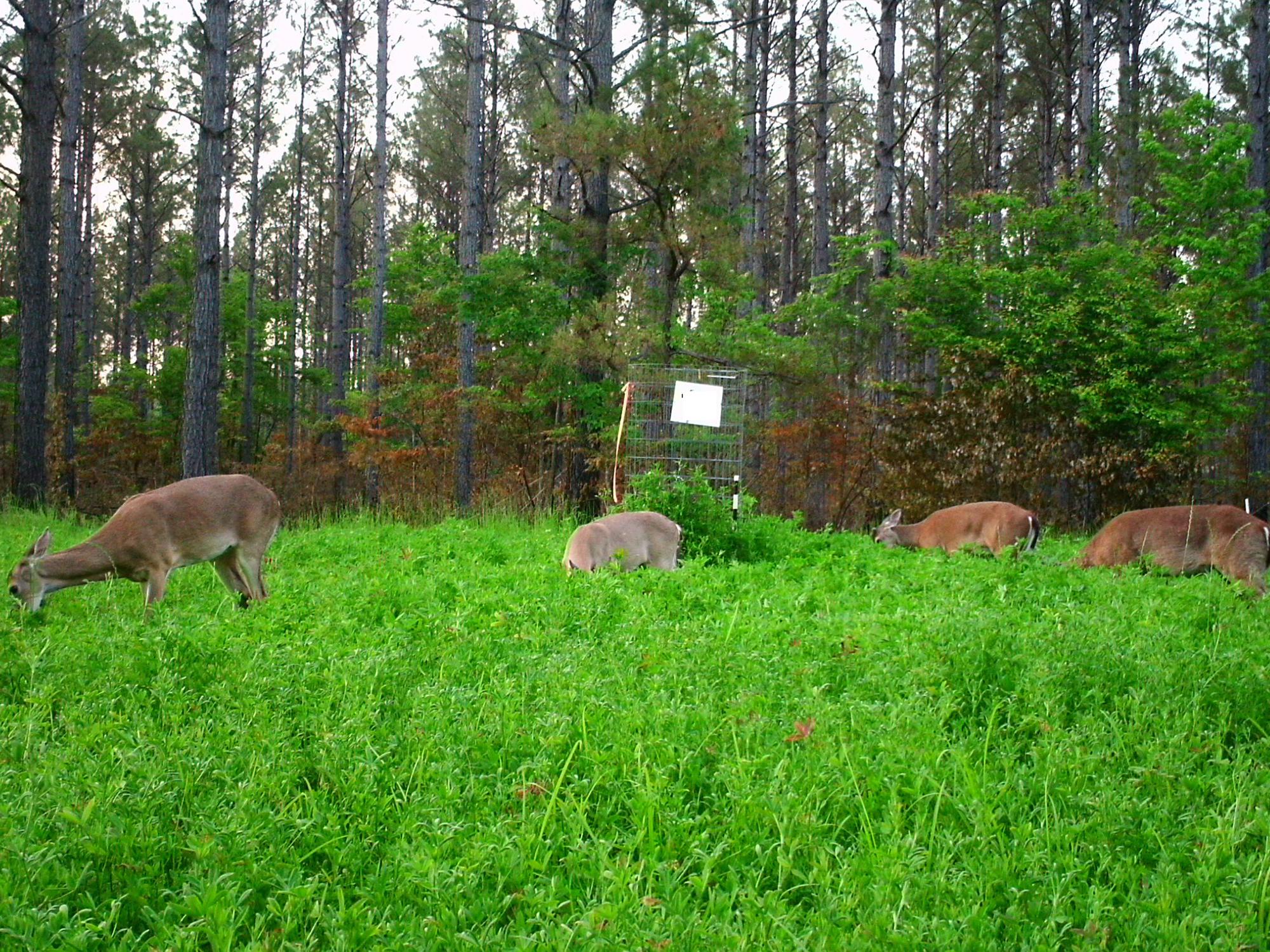Information Possibly Outdated
The information presented on this page was originally released on December 28, 2018. It may not be outdated, but please search our site for more current information. If you plan to quote or reference this information in a publication, please check with the Extension specialist or author before proceeding.
Wildlife food plots grow in popularity
STARKVILLE, Miss. -- Many hunters and landowners plant wildlife food plots these days, but this practice has become common only during the last 30 to 40 years in the Southeast.
Planting forages solely for the benefit of wildlife species originated from efforts to reintroduce white-tailed deer and turkey to the eastern U.S. These reintroductions began in the 1930s and continued through the 1960s in some areas.
Years of overhunting had taken a toll on many large game species. In addition, human land use practices had either destroyed or permanently altered millions of acres of habitat. As a result, deer and turkey populations severely declined throughout much of the region.
In addition to the challenges of successfully capturing and relocating species, wildlife professionals were faced with challenges of restoring quality habitats to provide cover and adequate food resources to sustain their populations. One successful practice that arose from these events was planting supplemental food plots.
Wildlife species have long benefited from agronomic crops, such as corn, beans, grain sorghum and wheat. The animals eat standing crops or the waste grains after harvest. Deer and turkey also enjoy cool-season forages planted for livestock grazing. Therefore, it just “made good sense” to plant grain and forage crops in openings to provide relocated deer and turkey with additional food sources.
In the beginning, wildlife food plot practices were limited to only a few states, namely the “big woods” areas of the northern central and northeastern U.S., where initial deer restocking efforts began. In the 1940s and 1950s, researchers began to learn more about deer nutrition, including seasonal dietary needs in relation to stress periods. As a result, wildlife biologists across the country began to recognize the value of food plots as a deer management tool.
Food plots also provided some unforeseen benefits in the form of attracting game. These benefits included increased hunter harvest, better public viewing opportunities and visible evidence that something was being done for wildlife. Within a few years, openings planted in seasonal forage crops for wildlife were common on many state lands.
By the late 1970s and early 1980s, deer populations were flourishing on many well-managed state lands and some private lands. Turkey populations were not necessarily flourishing, but they had been largely reestablished in many areas. Nevertheless, the results were in, and the hunting public had begun to take notice.
Throughout the 1980s, planting wildlife food plots became more popular among private landowners, especially in the Southeast. By the late 1980s and early 1990s, public interest in wildlife food plots had resulted in the creation of a commercial food plot industry.
Today, food plots are more popular than ever among private landowners and hunters, especially deer hunters. As a result, many new crops and crop varieties have been developed and now provide wildlife managers with options for just about every game species and soil condition. However, just remember they are not magic beans. Wildlife food plots should be a supplement to habitat management practices that promote naturally occurring food plants and cover.
Now that chronic wasting disease has been identified in Mississippi, adding nutrition via habitat management and food plots is a much safer alternative to supplementing with pelleted feed.

Editor’s Note: Extension Outdoors is a column authored by several different experts in the Mississippi State University Extension Service.







